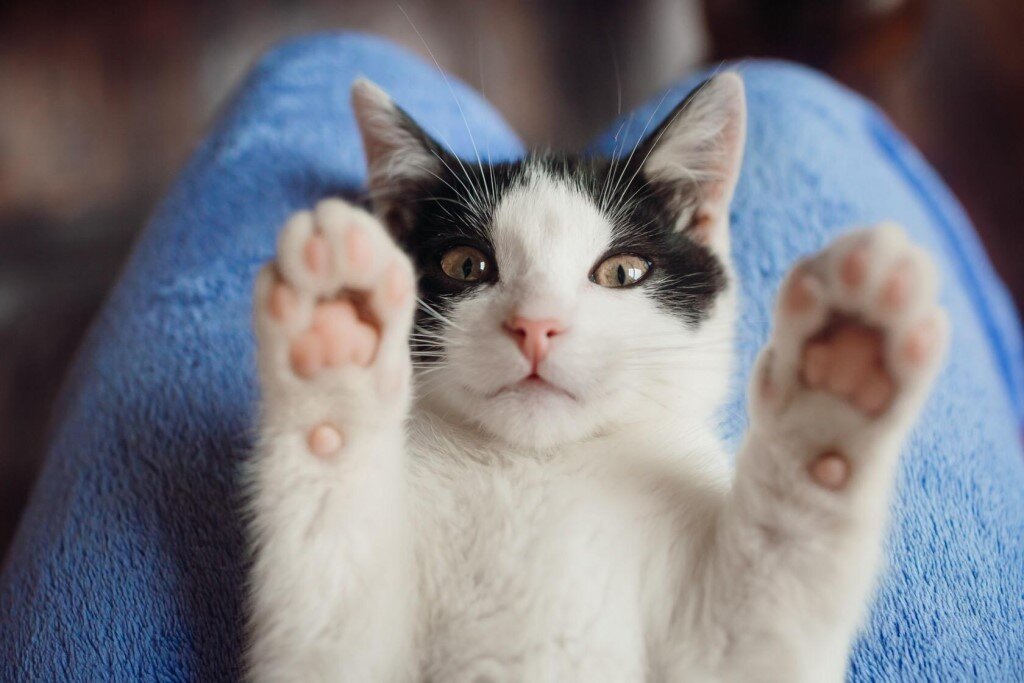Cholecystitis in cats (Latin Cholecystitis) is a chronic or acute inflammatory disease of the gallbladder.
The gallbladder is a pear-shaped organ that stores bile produced by the liver. During the digestion process, bile is released into the intestines, where it helps in the absorption of fats and stimulates the motility of the small intestine. Bile consists of bile acids, bile pigments (bilirubin), phospholipids, and cholesterol. Some of the bile acids are excreted with feces, while others are absorbed into the blood and returned to the liver to be included in bile production.
Cholecystitis in cats can occur in acute and chronic forms.
In the case of acute cholecystitis, the disease develops suddenly and progresses rapidly.
Causes of acute cholecystitis may include:
- obstruction of the bile duct, caused by gallstones, liver, intestinal, pancreatic neoplasms, mucocele,
- bacterial infections,
- parasites – liver flukes, giardia,
- trauma resulting in gallbladder rupture.
Symptoms indicating that your cat is experiencing an acute cholecystitis attack:
- nausea and vomiting with bile;
- refusal of food;
- rapid weight loss;
- increased body temperature;
- general weakness;
- tenderness in the liver area upon palpation;
- possible yellowing of the mucous membranes, discoloration of feces.
Oftentimes, symptoms are nonspecific, which complicates early disease diagnosis.
Severe deterioration, "acute abdomen," drop in body temperature, rapid shallow breathing, pale gums – may indicate gallbladder rupture. This leads to gallbladder peritonitis – a life-threatening complication. These symptoms always indicate the need to urgently bring the pet to a veterinary clinic.
Chronic cholecystitis.
It can go unnoticed for a long time and be detected incidentally during animal examination. In the absence of treatment for acute cholecystitis, it can also transition into a chronic form.
Symptoms:
- periodic nausea, especially after eating;
- loss of appetite;
- weight loss;
- digestive disorders, alternating between diarrhea and constipation;
Chronic cholecystitis may manifest as asymptomatic.
Contributing factors to the development of cholecystitis include:
- gastrointestinal diseases that reduce stomach secretory activity;
- unbalanced nutrition (overfeeding, lack of protein);
- gallbladder and liver damage;
The main causative agents are pathogenic microorganisms: streptococci, enterococci, staphylococci, E. coli, entering the gallbladder from the intestines or distant infection foci.
Diagnosis
Cholecystitis in cats does not have specific clinical signs, so to establish a diagnosis, general and biochemical blood tests, urine analysis, ultrasound examination of the liver and gallbladder are necessary. In cases of gallbladder stones, they may be visible on an abdominal x-ray. If wall changes of the gallbladder and bile heterogeneity are detected during ultrasound examination, a fine needle biopsy of the gallbladder is recommended, followed by cytological and microbiological analysis of the obtained bile.
Treatment
In case of suspected gallbladder rupture and gallbladder peritonitis, laparotomy is performed. Surgical treatment is also required in cases of cholecystitis that do not respond to medical therapy, obstruction of the bile duct.
However, most often, the use of therapeutic agents is sufficient.
One of the most important therapeutic factors is diet. Industrial therapeutic diets for animals with liver diseases are suitable. The diet must be strictly followed for at least two weeks. The physician may make adjustments to the pet's diet.
Antibiotic therapy is mandatory, ideally selected based on microbiological examination of the bile. Even in the absence of pathogenic microflora in the bile sample, antibiotics are necessary for secondary infection prevention. The duration of antibiotic use depends on the severity of the disease.
Bile flow enhancers are prescribed to improve bile flow.
If necessary, antispasmodics, infusion therapy, and enzyme preparations are prescribed.
Preventive Measures
To reduce the risk of cholecystitis development in cats, it is necessary to adhere to several simple rules that will help your pet stay healthy for many years.
- Cats require a rational balanced diet.
- Regular deworming of the pet is necessary.
- Vaccination of the cat is mandatory.
- Toxic substances such as household chemicals and other chemical agents should be stored in places inaccessible to cats.






